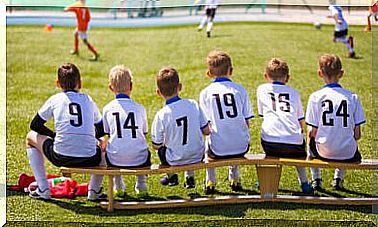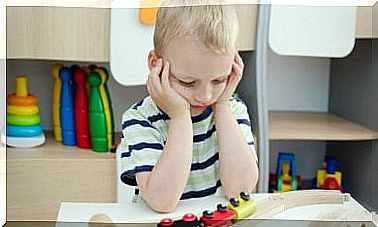Learn To Say No Positively

Learning to say no is one of the hardest things mothers face. Knowing how to deny something to a child is a challenge and a learning experience. So let’s show you how to say no in a positive way.
Tricks to say no positively
Well, if you’ve ever wondered how to say no positively to your kids, read on. There are many ways to express the same thing. It is exactly the different ways and methods that allow to obtain better or worse results.
For example, saying “I can’t play with you because I have things to do” is not the same as saying to your little one “help me make the bed and then I’ll play with you”. As you can see, the message is much more positive if you choose the second option.
We must keep in mind that parents tend to use no with children constantly. If we use this kind of language loaded with no’s, we will only be able to convey a negative message. So it would be better if we tried to use a balanced language in which the no and the yes had the same weight.
Saying “no” without sounding like a denial
Although it doesn’t seem like it, denying something to a child without saying the word “no” is possible. Besides, it’s also much more beneficial for them. If we rephrase things, children will understand why it should be this way, they will better understand the meaning of the rules, and therefore it will also be easier to comply with them.

All of this, in the end, will make them behave more responsibly. They themselves will realize that any act has its consequences. They will begin to act more autonomously and their self-esteem will be greatly benefited.
When the no is overused, we run the risk of children never paying attention to us. Therefore, this word must be reserved for something really important. In this sense, it is best to use this word for actions that pose a danger to the child, such as crossing the street without holding hands or leaning out of the window.
Changing the language to the positive with children
When changing the language, what we do is not allow the child to start doing a series of things that were previously prohibited. On the contrary, what we do is tell her the same thing, but in a way that she can understand.
This does not consist in denying anything to the child, but in knowing how to use the no so that it does not lose its meaning. Parents must apply discipline, enforce rules, and reinforce the child’s character. For that, denial is important. Although it’s not always through a particular word. Among the alternatives we can adopt are:
- Suggest other actions that the child is able to take. For example, if you can’t go to the park, you can cook at home, paint, or watch television. “Sell” as positive to do something that you can replace at that time, even if it’s not what your child had thought.
- Another way to apply discipline is to defer the request until the child has completed their tasks. If your child wants to do something and you can’t at that time, tell them you will do it some other time. Of course, then you must keep your promise.

- If you find that your child wants to do something he shouldn’t, instead of using no, try reasoning with him. For example, if he wants to hit his brother, you should explain what will happen if he does. Let him know that actions have consequences.
- Talk to your child about the rules from the start. It is essential that you clarify this aspect so that when he has to say no, he understands why. Tell him the rules that exist at home. In this way, they will anticipate the answer and know what can be traded and what cannot be traded. So they will be learning the rules of coexistence and you will be educating them.
Remember, saying no positively will not only help you fulfill your responsibility to raise your child, it will also allow your child to understand your motives and the importance of obeying.








